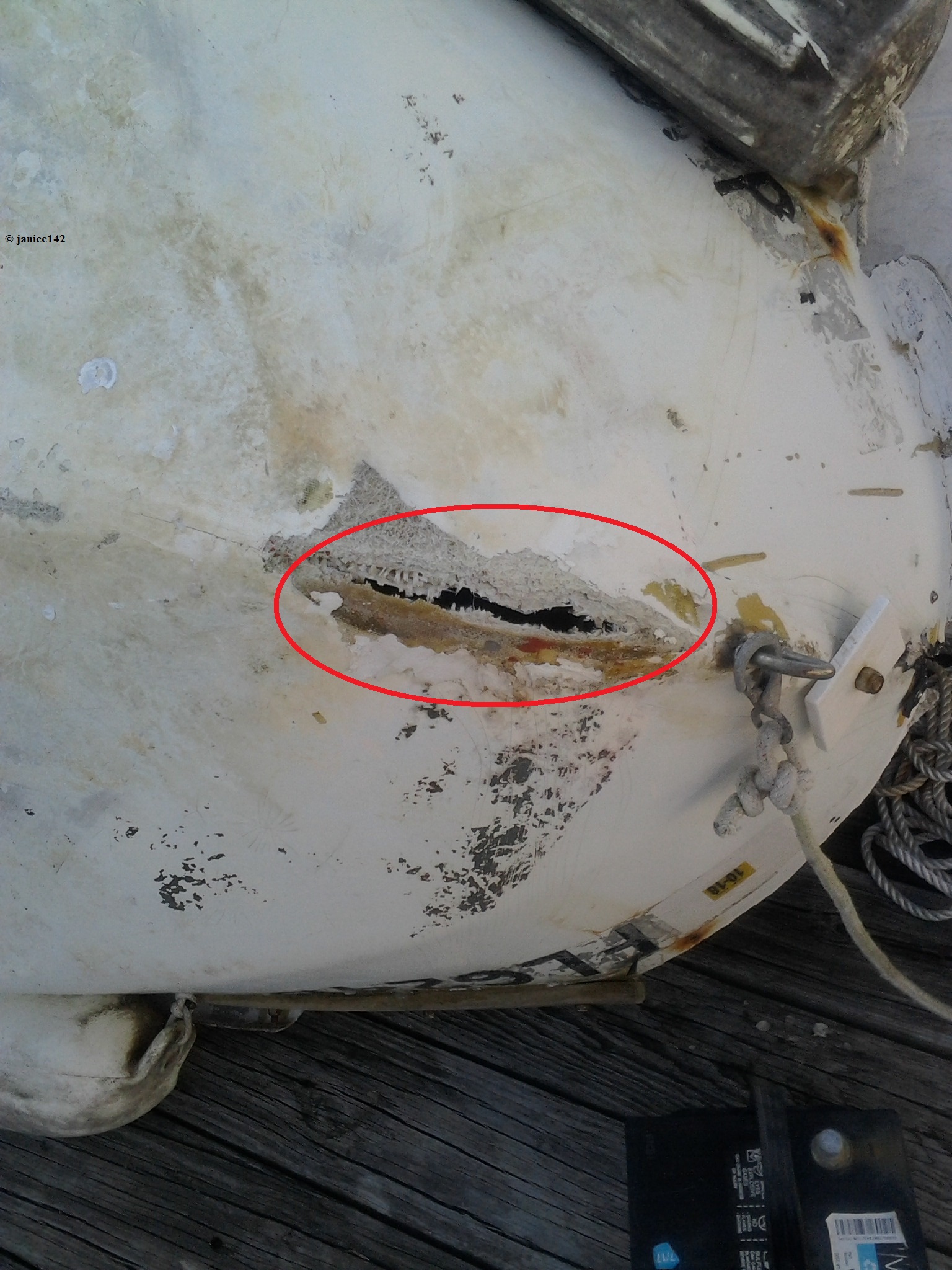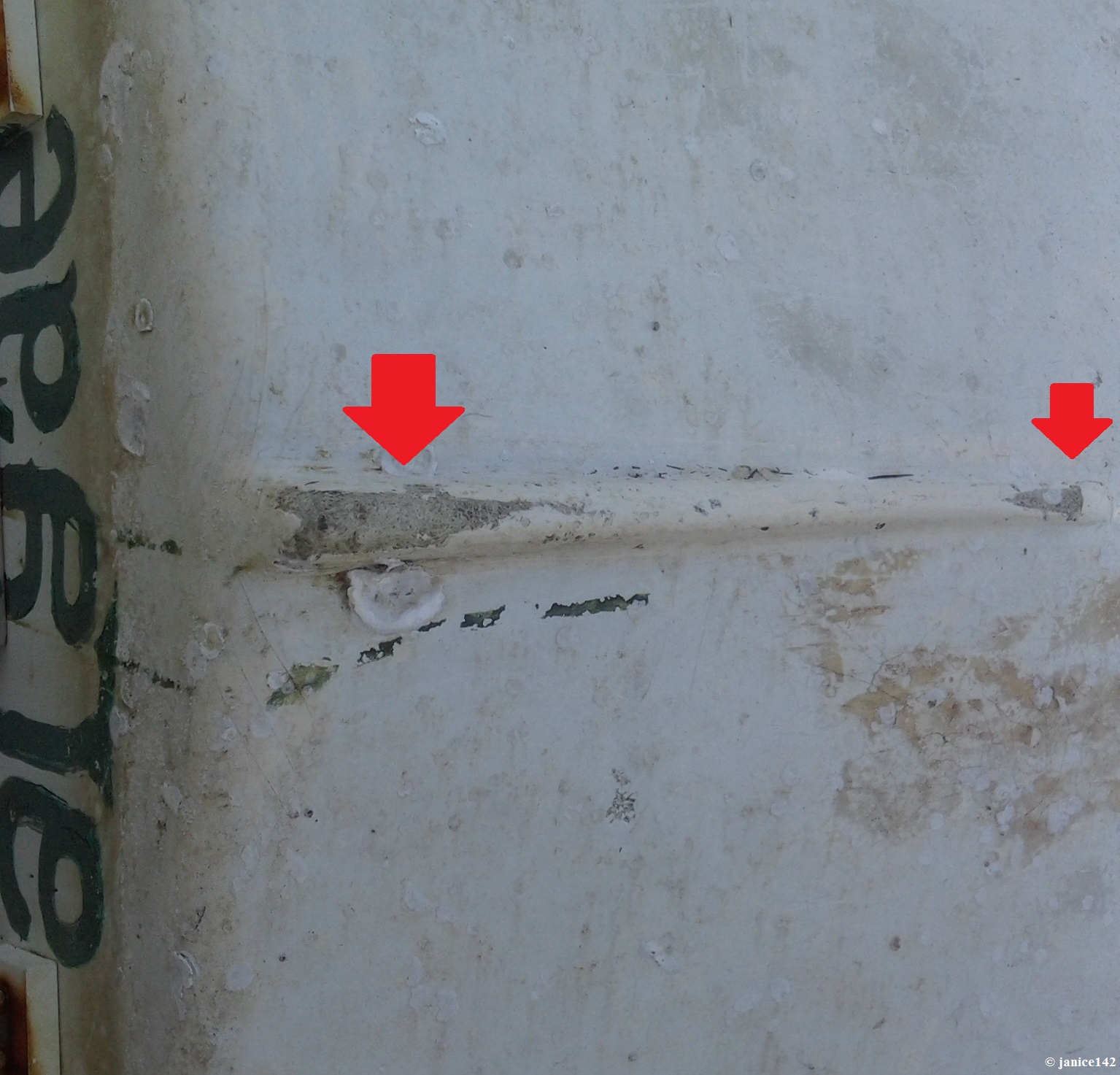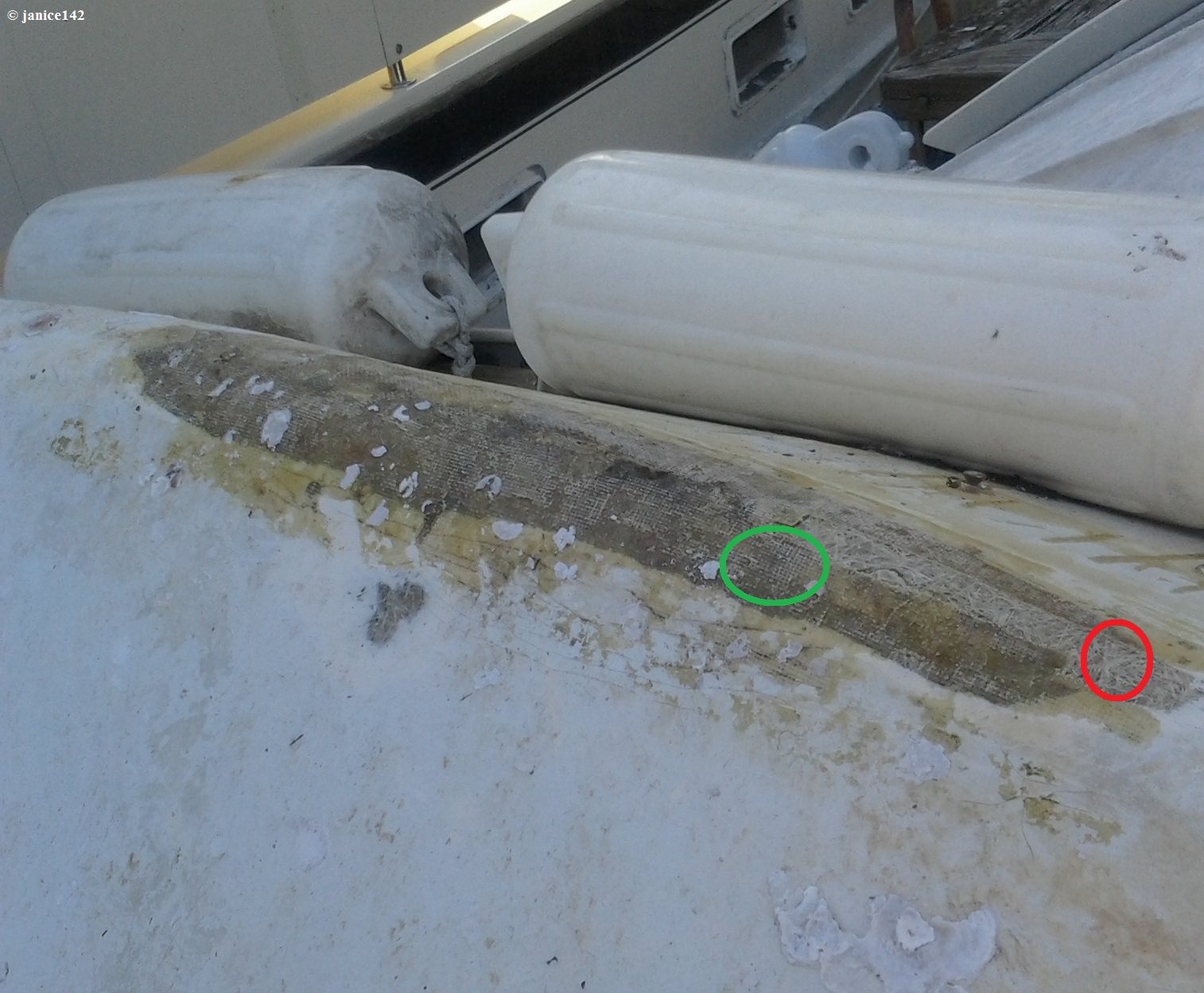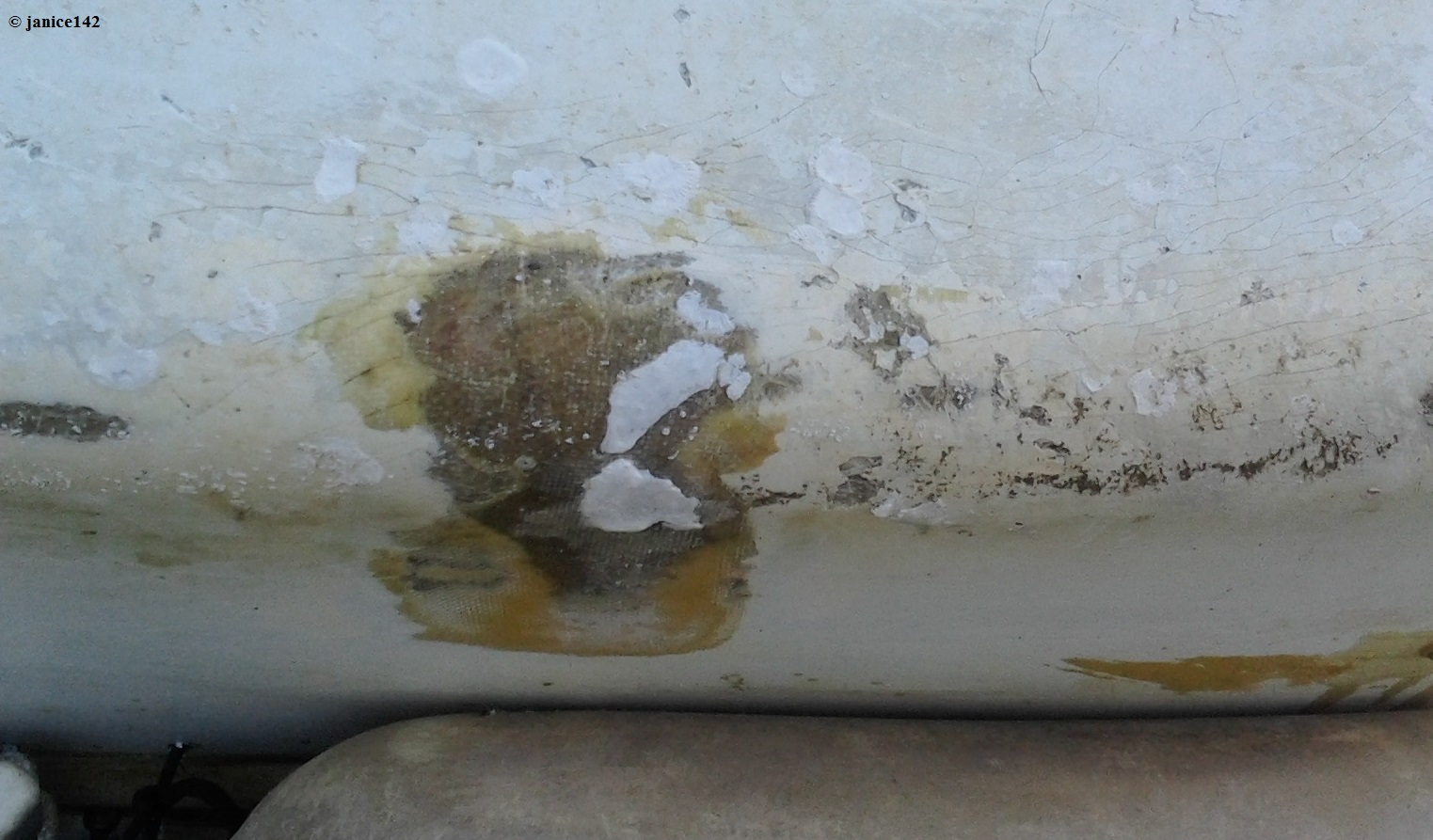Okay, here's Algae: I pulled out the various patches such as silicone, LifeCalk, LifeSeal, RTV (hey, if it was an adhesive or had plug potential I added it, especially as the tubes were near the end and in danger of hardening. I'd rather use something than throw it away. There's epoxy (I think) there too on the inside. Goodness knows what all else has been patched on it over the years.
Here she is in her naked scruffiness:
That is the worst. There are other areas of wear:
And along the side:
As you can well imagine, this Good Idea (fix the dinghy) has turned into a Project. I've got Flex caulk (apparently it's advertised on TV) and that stuff is looking better and better.
Algae is a 1972 hard dink. She's had a rough life. I love her though frankly there are issues. She's flexing in the middle (seats hold her together and those need to be braced again) ... however I don't want to give up on her.
With the Flex stuff I can make her Good Enough.
That said, there is a fiberglass supply shop here in St. Pete and I've got an offer for a ride to it one day next week.
The Plan, written in beach sand on a rising tide, is to buy some sort of mat and/or roving and epoxy or polyester resin (whichever is least expensive) and patch her. I'm not sanding. I do not sand fiberglass. Ever.
So a smooth as silk finish is unlikely.
And, to complicate further, I have zero bottom paint left. I am planning on having Seaweed's bottom done in a few months so will have paint then for Algae. The diver (former/since replaced with new diver) was supposed to be keeping Algae scraped. You an see oysters that I have to beat off near her keel.
Anyway, that's my problem of the week. Algae.
One more picture of my girl. And really, I'm rather ashamed to admit I let her get this bad. Sigh.
To fix the major split at the bow, use what?
And is it okay to just add epoxy or polyester resin over the areas where the gelcoat has disappeared? Then add plain old paint until I can afford some real bottom paint? I'll have extra when I do Seaweed next so I am trying to hold off on that purchase.
For the record, the bottom paint that was on Algae has worn away over the past half dozen years. She has been dragged up on beaches and rocks lots of times. I've scraped Algae's bottom within a inch of her life numerous times.
And thanks for any insight you can provide.
The multi-step thing show above is for perfection. I don't have the energy for that. I am hoping for Good Enough. What say you?




